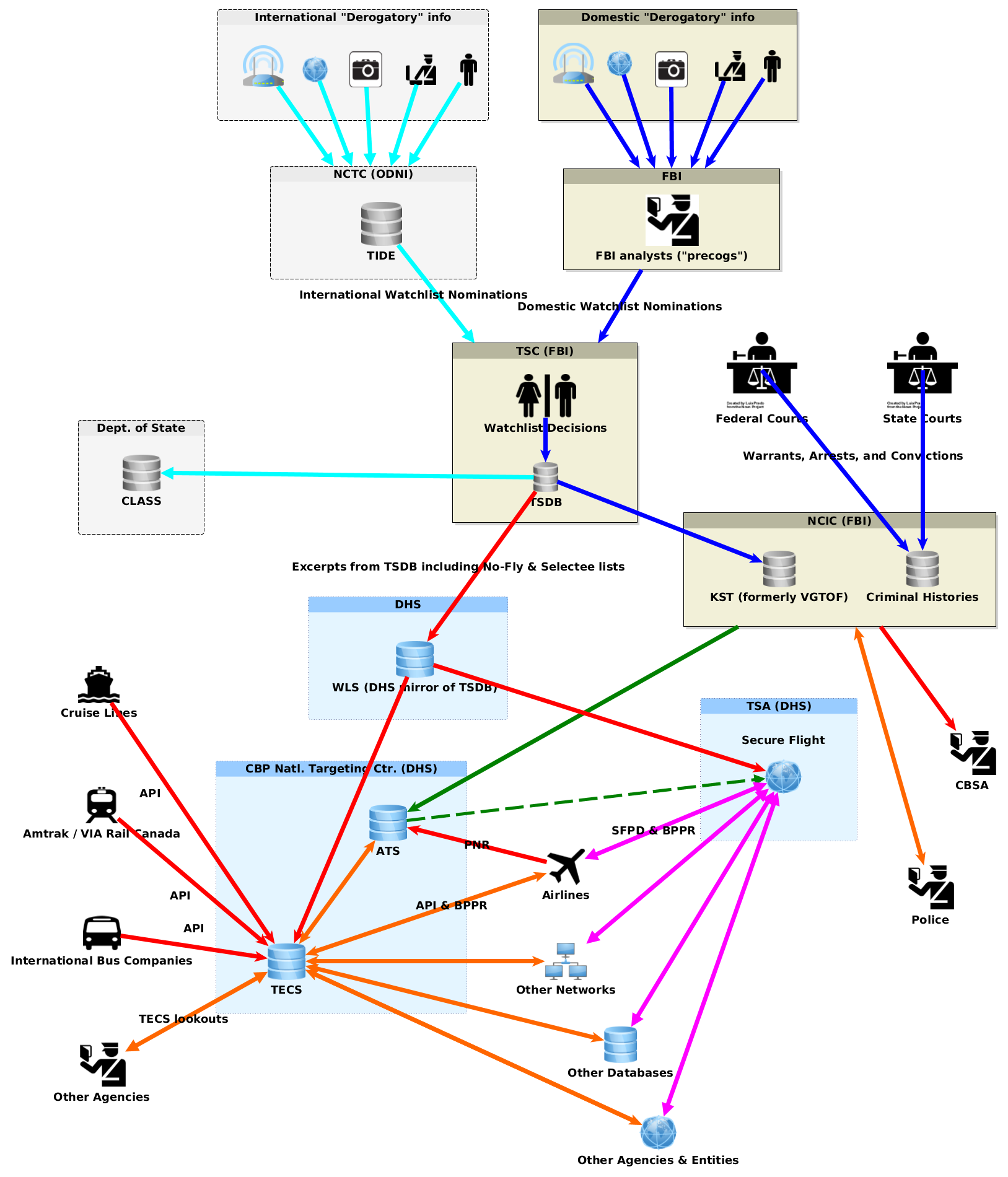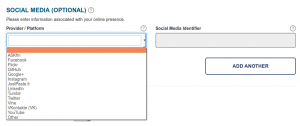Is the TSA checking domestic airline passengers for warrants?
 [Entities and data flows involved in decision-making (“vetting”) about travelers. Larger image, PDF with legend.]
[Entities and data flows involved in decision-making (“vetting”) about travelers. Larger image, PDF with legend.]
The latest annual report on data-mining by the Department of Homeland Security contains a disturbing hint that the TSA may have gotten the ability to include checks for warrants and police “wants” in its “vetting” of passengers on domestic airline flights.
This would turn airline check-in counters and kiosks and TSA checkpoints for domestic air travel into dragnet suspicionless warrant checkpoints.
According to page 16 (page 19 of the PDF) of the newly-released 2016 DHS Data Mining Report, “An annex to this report containing Sensitive Security Information (SSI) about Secure Flight’s use of ATS-P is being provided separately to the Congress.”
What data from ATS, to which the TSA didn’t already have independent access, is being used by the TSA as part of Secure Flight? For what purpose?
In the diagram above (larger image, PDF with legend), the solid green line shows the transfer of data from the FBI’s “National Criminal Information System” (NCIC) criminal history database to CBP’s “Automated Targeting System” (ATS) for use in “vetting” international airline passengers. The dashed green line shows the newly-disclosed transfer of ATS data to the “Secure Flight” system used by the TSA to “vet” domestic airline passengers. This could allow the TSA to check all domestic airline passengers for warrants and “wants” listed in NCIC, as CBP already has the ability to dos for all international airline passengers on flights to or from the US.
There is no explicit mention in the public portion of the DHS report of TSA use of NCIC data for decision-making (“vetting”) about domestic air travelers. But as the diagram above shows, almost all of the other data contained in ATS is already available directly to the TSA for use in Secure Flight. It’s not clear what data from ATS, other than criminal history data imported to ATS from NCIC, the TSA doesn’t already obtain directly without needing to get it from ATS.
Records of arrest warrants in NCIC are often inaccurate, as we have noted before. It’s especially common for the issuance of a warrant to be reported to the FBI for inclusion in NCIC, but for the later cancellation of that warrant not to be reported to NCIC. NCIC contains hundreds of thousands, perhaps millions, of listings for warrants that are no longer valid. Using TSA “vetting” of domestic airline passengers as a suspicionless dragnet for “wanted” individuals would inevitably result in the detention and arrest of many innocent people at TSA checkpoints on the basis of inaccurate NCIC data.
Normally, warrant checks are permissible only on the basis of reasonable articulable suspicion that a person has committed a crime. The current CBP checks of international travelers for warrants, police “wants”, and investigative “lookouts” have been permitted only as part of a judicially-created border exception to the 4th Amendment to the US Constitution. There is no comparable “airport exception” to the 4th Amendment that would allow suspicionless dragnet warrant checks on domestic travelers by the TSA. Travel is not an inherently suspicious activity. It’s the exercise of a Constitutional and human right, and cannot in itself be the basis for warrant checks.
Members of Congress should look closely at the secret annex to the 2016 DHS Data Mining Report, and question the DHS and TSA as to whether they are using, or intend to use, data obtained from NCIC (directly or indirectly through ATS or otherwise) to conduct warrant checks on domestic air travelers.
If any of our readers has information about someone being identified for arrest on an outstanding warrant (valid or invalid) on the basis of TSA “screening”, rather than on the basis of an independent police warrant check based on reasonable suspicion, please let us know.
